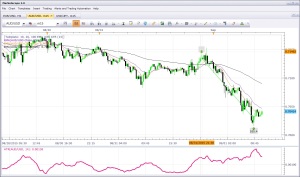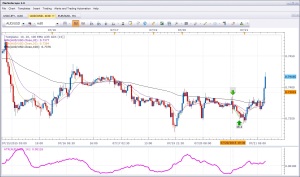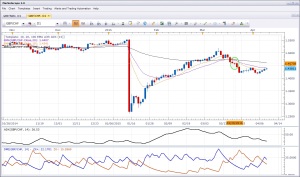Currencies are traded in pairs. The first currency listed is given its value in terms of the second. As in, EURUSD at 1.1411 means that a euro is worth 1.14 per US dollar.
My strategy trades strengthening currencies against weakening currencies, and the great thing about forex trading is you can easily take both long and short positions. Being long means I expect the pair to rise in value, and being short means I expect the pair to decrease in value.
Based on my analysis from February 12, I’ve selected USD and GBP as strengthening currencies, and EUR, CAD, AUD, and NZD as weakening currencies. These are the positions I would have taken:
- Short EURUSD
- Short EURGBP
- Short AUDUSD
- Short NZDUSD
- Long USDCAD
- Long GBPCAD
- Long GBPAUD
- Long GBPNZD
Let’s look at screenshots of price action to see how these trades may have turned out, had I taken positions on or recently after February 12.
Short EURUSD

Price held around 1.1400 for nearly 2 weeks, but on Feb 25, it started a drop of about 900 pips to 1.0500 by March 15. The trade would have stayed alive if my stop was set above 1.1500, but I would have needed huge patience to wait 2 weeks for it to start moving, and to ride it down 900 pips for another 2 weeks. Direction moved as expected…eventually.
Short EURGBP
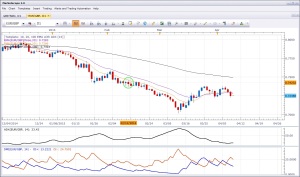
Price held around 0.7400 for a few days and then started dropping. Same as the EURUSD trade, this one needed patience to ride the move down to nearly 0.7000. May have worked quite well.
Short AUDUSD
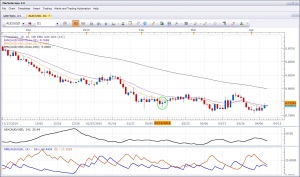
Price was around 0.7750 on Feb 12, and hit nearly 0.7875 about 2 weeks later. This trade moved against me before it dropped, and possibly would have been stopped out before it moved down closer to 0.7500. Price did eventually move down, but only after it went up quite a bit. Hard to say if this position would have been a winner or not.
Short NZDUSD

If I took a position around 0.7400 on Feb 12, I surely would have been stopped when price moved above 0.7500 a few days later. This one was wrong.
Long USDCAD
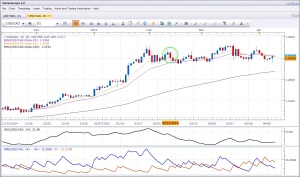
On Feb 12, price was at about 1.2500. It dipped below 1.2500, but the position might have held if my stop was near 1.2400. Again, patience was needed to let this trade cook for nearly 4 weeks. Price hit about 1.2750 on March 17. Hopefully I would have been wise enough to take profit.
Long GBPCAD
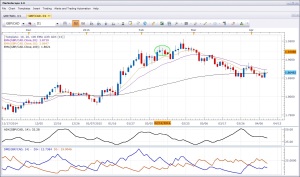
With price at 1.9200 on Feb 12, this one needed to survive a drop of 200 pips to 1.9000 by Feb 16 before it climbed back up to 1.9500. I’m not sure if I would have used a stop that large to make this trade work. Probably wrong on this one.
Long GBPAUD

On Feb 12, price was at about 1.9850, but never climbed higher and just sank and sank. Most certainly this trade would have been stopped out. This one was wrong.
Long GBPNZD
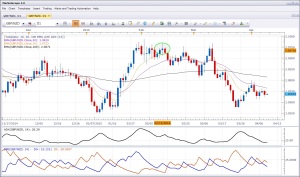
Price was near 2.0700 on Feb 12, and then dropped like a rock. Would definitely have been stopped out. This one was wrong.
Conclusions
- Price moves take longer than expected (up to 4 weeks)
- GBP did not gain in strength as expected
- Stop Losses need to be rather large (up to 100 pips)
- Stop Losses seem to work well near recent Support or Resistance
- Positions of multiple lots should be taken, perhaps to close out half the position at a small profit, and then let the other half run indefinitely with a trailing stop
- Not enough capital to hold 8 positions – need to focus on 1, 2, or maybe 3
